1. Home-Canned Foods Without Pressure Canners
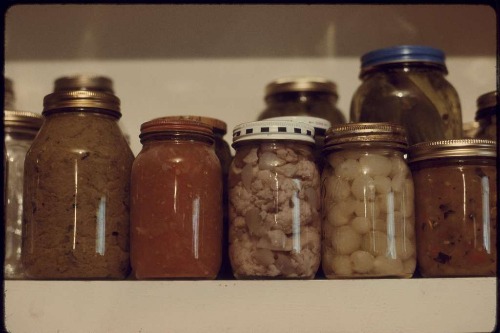
Grandmas often canned their own fruits, vegetables, and even meats in jars using boiling water methods at home. However, today, low-acid foods like green beans or meats require pressure canners to avoid botulism risks. Without the right equipment, home-canning these items is strongly discouraged and sometimes illegal to sell. The risk of deadly food poisoning makes some of these traditional recipes unsafe by modern standards.
Back then, folks might not have understood botulinum spores or had access to pressure canners, but now food safety guidelines are strict. So while grandma’s jams and pickles might still be safe, her old recipes for canned meat or veggies need updating. It’s not that the recipes are bad, just that the methods don’t meet today’s health rules. This shift protects families from serious illness.
2. Homemade Moonshine

Back in the day, many grandmas had a recipe for homemade moonshine, especially during Prohibition or in rural areas. It was basically homemade distilled alcohol, often made from corn mash or fruit. These days, distilling alcohol at home without proper permits is illegal because it can be dangerous and unregulated. The government tightly controls alcohol production to prevent toxic batches and tax evasion.
Moonshine was more than just a drink—it was a part of family tradition and community gatherings. But today, making your own distilled spirits without a license can land you in serious legal trouble. It’s not just about the alcohol itself, but the process of distillation which is highly regulated. So, what was once a fun grandma project is now mostly off-limits.
3. Pâté with Raw Liver

Grandma’s homemade pâté often involved raw liver blended with herbs and spices to create a smooth, rich spread. Before modern food safety rules, eating raw or undercooked liver was common, but it’s now discouraged and sometimes regulated. Raw liver can carry bacteria and parasites like salmonella or toxoplasma, which pose health risks. Food safety laws today strongly advise against preparing liver this way.
Even though pâté remains a beloved delicacy, commercial versions go through strict processing standards. Homemade recipes that skip cooking steps have fallen out of favor legally due to public health concerns. So, what was once a simple treat can now be a risky dish if made at home without proper cooking. Grandma’s recipe might bring nostalgia, but it clashes with current safety guidelines.
4. Shark Fin Soup
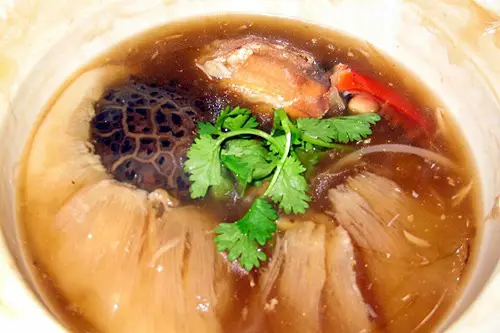
Shark fin soup was a popular dish in many traditional kitchens, valued for its texture and status symbol at celebrations. The problem today is that shark finning is banned in many places to protect endangered shark populations. Because of these environmental laws, shark fins are now difficult or illegal to obtain in many countries. Cooking a traditional shark fin soup recipe now conflicts with conservation efforts.
While the recipe itself isn’t “illegal,” possessing or selling shark fins often is, making the soup practically off-limits. Environmental activists and governments have pushed to protect sharks, which are crucial for ocean ecosystems. So, what was once a delicacy is now an ecological no-go. Grandma’s cookbook might have had it, but modern laws have changed the menu.
5. Dishes Using Wild Game Without Proper Permits
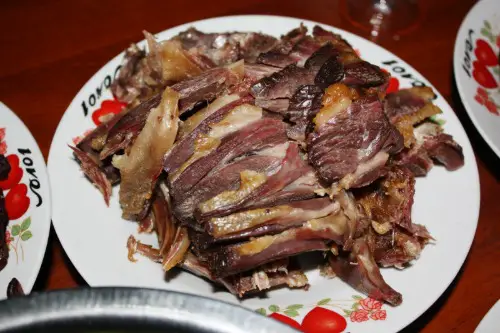
Hunting and cooking wild game was common in many households, with grandma’s recipes featuring deer, rabbits, or wild birds. But hunting regulations today require licenses and seasonal restrictions, making some traditional game dishes illegal if sourced improperly. Poaching or cooking protected species can lead to heavy fines or worse. Even recipes themselves aren’t banned, but the sourcing and preparation are tightly controlled by law.
Many grandmas had a deep knowledge of local hunting laws, but those rules have become much stricter to protect wildlife populations. So, making a wild game stew without following these laws could land you in trouble. Recipes haven’t changed, but the legality of cooking them without permits certainly has. It’s a reminder that tradition sometimes clashes with conservation.
6. Raw Milk Cheese
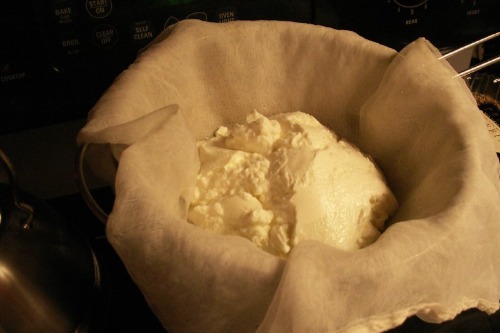
Making cheese from raw (unpasteurized) milk was a classic grandma skill, especially with farm-fresh ingredients. However, in many countries, selling raw milk cheese aged less than 60 days is illegal due to safety concerns. Unpasteurized milk can carry dangerous bacteria like Listeria, posing risks to vulnerable people. Even home production of certain raw milk cheeses faces strict regulation to prevent outbreaks.
While raw milk cheese lovers swear by the taste and tradition, public health rules have tightened the reins. Grandma’s recipe book might be full of these old methods, but today you need to be cautious and knowledgeable about the laws. It’s a balancing act between flavor and safety that modern regulations take very seriously. This keeps foodborne illness risks in check.
7. Homemade Foie Gras
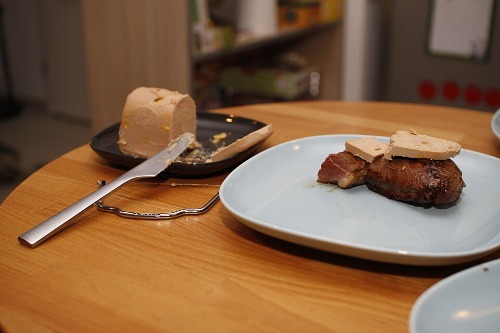
Foie gras, a delicacy made from specially fattened duck or goose liver, was a traditional treat in some families. But the production process, involving force-feeding birds, is now banned in several places for animal cruelty reasons. This makes cooking or selling homemade foie gras illegal where those laws apply. Even if you have the recipe, obtaining the product legally might be impossible or unethical in many regions.
Grandma’s special occasions might have included foie gras, but today animal welfare laws often override tradition. Some places consider it a banned food product due to how it’s made. So, while the recipe remains famous, it’s rarely practical or legal to recreate at home nowadays. This shift reflects changing views on animal rights.
8. Homemade Lard-Based Pastries Without Proper Inspection
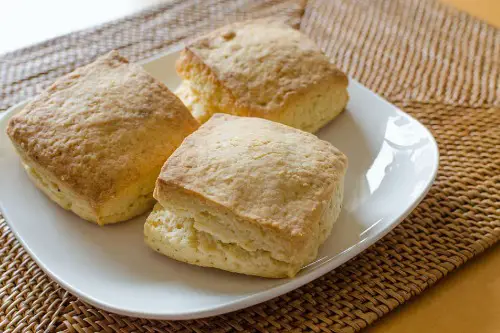
Using lard rendered from home-raised pigs was a staple fat source for grandma’s pie crusts and pastries. Nowadays, home butchering and lard production can be regulated to prevent contamination or disease spread. Without proper inspection or sanitary controls, using homemade lard may be illegal or heavily restricted in some areas. Commercially available fats have replaced these traditional ingredients for safety reasons.
Grandma’s buttery, flaky crusts may have relied on homemade lard, but food safety regulations today demand more oversight. This means your homemade recipes need to consider where the fat comes from and how it’s processed. The recipe isn’t banned, but some key ingredients might be harder or illegal to produce at home. It’s another example of tradition meeting modern health standards.
9. Bear Meat Stew
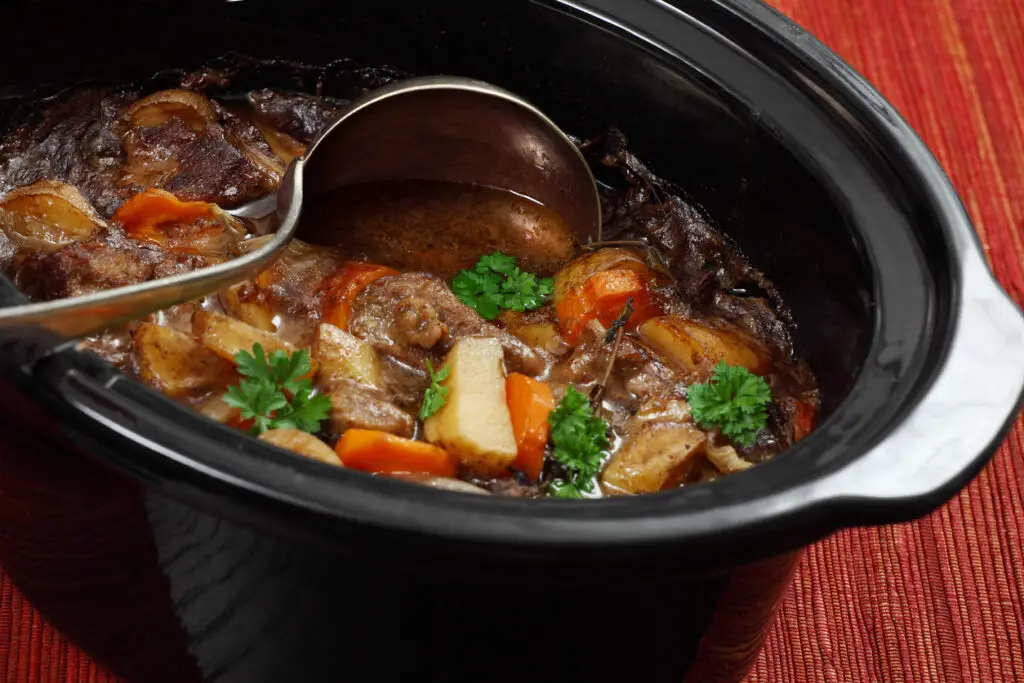
Bear meat was once a prized ingredient in some hunting families, featuring in hearty stews or roasts. But bears are now protected in many places, and hunting them without permits is strictly illegal. Moreover, bear meat must be handled carefully to avoid trichinosis, a parasitic disease that can be transmitted to humans. Because of these health and legal risks, cooking traditional bear recipes is mostly forbidden or heavily regulated.
Grandma might have had a bear stew recipe tucked away, but today those ingredients are not so easy to come by legally. Conservation laws and public health concerns limit the availability and cooking of bear meat. This makes once-common dishes into rare or outlawed culinary adventures. It’s a good reminder that wild game isn’t always straightforward to cook anymore.
10. Haggis Made with Sheep Lung

Traditional Scottish haggis includes sheep’s pluck—heart, liver, and especially lung—minced with oatmeal and spices. However, in countries like the U.S., importing or selling haggis containing sheep lung is illegal. This is due to concerns over lung flukes and other parasites that can pose health risks. As a result, many commercial haggis producers avoid using lung, making the original recipe hard to replicate legally outside Scotland.
Grandma’s recipe may have called for the full sheep pluck, but modern food safety laws restrict parts of the animal. This makes classic haggis recipes a challenge to cook authentically in some places. Even if you can get the ingredients, legal barriers might stop you from selling or serving it. The tradition lives on, but sometimes it’s limited by regulations.
11. Raw Eggs in Homemade Mayonnaise
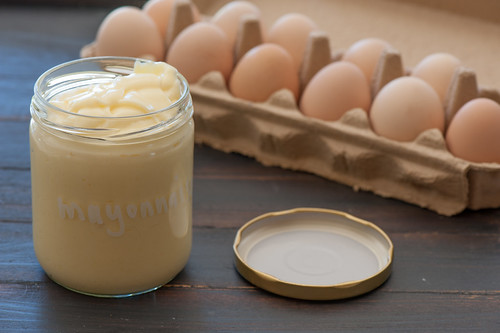
Grandmas loved making mayonnaise from scratch using raw egg yolks whisked with oil and vinegar or lemon juice. While this was delicious and common, raw eggs carry a risk of salmonella contamination. Today, many food safety experts recommend using pasteurized eggs or avoiding homemade mayo in commercial settings. Restaurants often can’t legally serve homemade mayo with raw eggs for this reason.
At home, people still make raw egg mayonnaise, but it’s considered risky and sometimes even illegal to sell without proper pasteurization. Grandma’s recipe remains popular, but public health laws have made it tricky for commercial use. If you want to keep the old method, it’s best to use pasteurized eggs for safety. This ensures you enjoy tradition without risking illness.
12. Homemade Cheese Using Unapproved Rennet
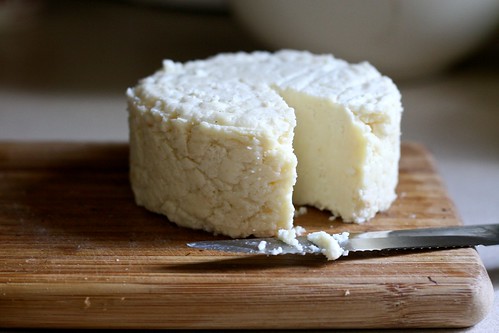
Rennet is an enzyme used in cheese making to curdle milk, and traditional recipes often called for homemade or animal-sourced rennet. Today, many countries regulate rennet use, requiring approved sources and labeling. Homemade rennet, especially if made from animal stomachs without inspection, may be illegal to sell or produce commercially. This means grandma’s old cheese recipes might not comply with modern food regulations.
While home cheese making is still popular, commercial production demands stricter controls on ingredients like rennet. This is to ensure safety, consistency, and allergen information. So, recreating grandma’s cheese at home is one thing, but selling it might be another story. It’s a subtle but important legal difference from past generations.
13. Wild Mushroom Pickles Without Proper Identification
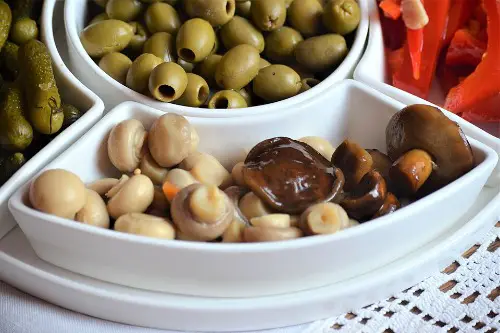
Grandma might have canned wild mushrooms picked from local forests and turned them into delicious pickles or relishes. But many wild mushrooms are toxic or even deadly if misidentified, and food laws now restrict selling home-canned wild mushrooms without proof of safety. Improperly canned mushrooms can also cause botulism if not processed correctly. For these reasons, traditional wild mushroom recipes are often discouraged or illegal commercially without certification.
While foraging is still enjoyed by many, modern regulations prioritize public safety over tradition. Selling or sharing wild mushroom products requires expert identification and safe canning practices. This makes grandma’s wild mushroom pickles a potentially illegal risk if done carelessly. Better safe than sorry with these forest finds.
14. Homemade Blood Sausage (Black Pudding)
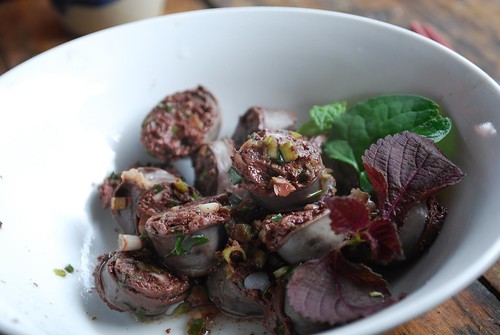
Blood sausage or black pudding, made by cooking animal blood with fillers like oats or barley, was a staple in many households. However, some regions now regulate the sale and production of blood products to prevent disease transmission. Making blood sausage at home is often legal, but selling it requires strict hygiene and inspection standards. This has made grandma’s traditional blood sausage recipe harder to commercialize legally.
Blood is a highly perishable ingredient that can harbor bacteria if mishandled. Modern food safety laws aim to protect consumers by enforcing processing rules. So while cooking at home might still be safe, selling homemade blood sausage could be illegal without certification. It’s another example of tradition running up against modern health codes.
15. Homemade Eggnog with Raw Eggs and Alcohol

Grandma’s holiday eggnog was often made with raw eggs, sugar, milk, cream, and a splash of homemade or store-bought alcohol. Like homemade mayo, raw eggs in eggnog carry salmonella risks, which is why commercial versions usually use pasteurized eggs or cook the mixture. Drinking or serving homemade raw-egg eggnog to others can be legally risky in some places due to health codes. This turns a festive family tradition into a food safety concern.
Many people still love grandma’s eggnog recipe during the holidays, but it’s best to use pasteurized eggs or cook the mixture gently to reduce risk. Laws targeting raw egg usage in commercial settings mean homemade eggnog is often confined to personal use. So while it’s not exactly illegal to make at home, it’s frowned upon in public or commercial settings. A little tweak keeps the tradition tasty and safe.
16. Squirrel Pot Pie Without Hunting Permits

In many rural kitchens, squirrel meat was once a common and affordable protein, often baked into rich, flaky pot pies. Hunting squirrels didn’t require much more than a steady aim and a cast-iron skillet in grandma’s time. Today, however, hunting regulations demand permits, and in some places, specific squirrel species are protected. Cooking without the right sourcing can quickly cross from tradition into illegality.
What seemed like a humble comfort food now sits under a web of wildlife protection laws. Even if grandma’s recipe card is intact, finding a legal and safe source for squirrel meat may be tricky. State-by-state regulations make blanket approval impossible, so what’s fine in one area might be illegal in another. That charming recipe might stay nostalgic rather than practical.
17. Pickled Eggs Stored at Room Temperature
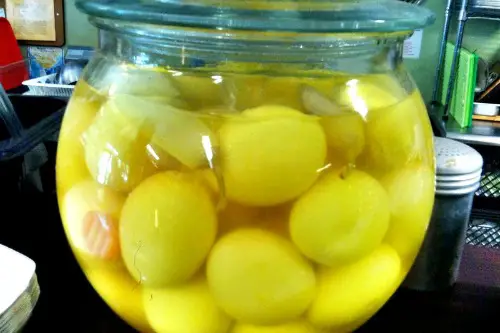
Grandma might have kept a jar of bright pink pickled eggs right on the kitchen counter or in the pantry. While they were tangy and full of flavor, storing them without refrigeration can allow harmful bacteria to thrive. Current food safety standards require acidic pickled products to be stored in safe, cold environments to prevent contamination. Selling unrefrigerated pickled eggs is outright illegal in many jurisdictions.
In the past, vinegar brine was thought to be a perfect preservative, but science has since found its limits. Today’s rules don’t just target flavor—they prioritize pathogen prevention. Grandma’s jar of eggs might still look appetizing, but modern inspectors would quickly confiscate them. The tradition survives, but it must now live in the fridge.
18. Turtle Soup from Wild-Caught Turtles
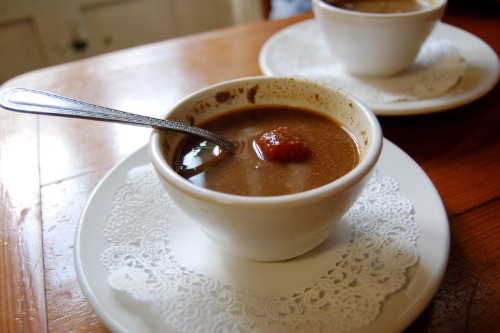
Turtle soup was once a luxurious dish, simmered for hours until tender and flavorful. Grandmas in coastal or river communities often had recipes handed down through generations. But with many turtle species now endangered or protected, catching them without permits is illegal. Even sourcing farm-raised turtle meat can be restricted depending on local laws.
The crackdown isn’t just about conservation—it’s also about public health, since turtles can harbor salmonella and other pathogens. Modern wildlife laws mean that grandma’s recipe is often impossible to make legally. Restaurants in some areas still serve regulated versions, but the wild-caught variety is off the menu. For most people, turtle soup now belongs in history books rather than kitchens.
19. Clabber Milk Baking
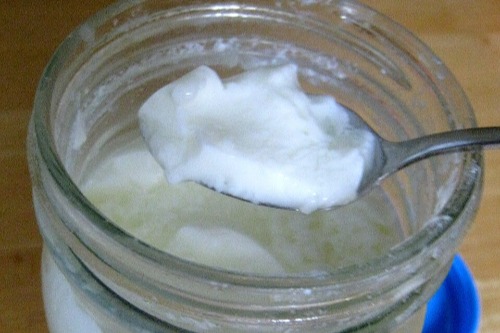
Clabber milk—naturally soured raw milk—was a staple in old-fashioned baking, giving biscuits and cakes a distinctive tang. In grandma’s day, leaving raw milk out to thicken was simply part of the routine. Now, intentionally letting milk spoil outside refrigeration violates food safety rules in many regions. Selling clabber-based products made without pasteurized milk is especially restricted.
While the taste is unique, the method carries risks of harmful bacteria growth. Today’s bakers rely on cultured buttermilk or safe fermentation starters instead. Grandma’s clabber biscuits might still be possible at home, but commercial kitchens would face heavy fines for the same process. It’s a small but telling example of safety replacing spontaneity in cooking.
20. Sassafras Tea Made with Unprocessed Root Bark

Sassafras tea was once a common home remedy, brewed from the aromatic root bark. Grandma might have served it for everything from colds to an afternoon pick-me-up. However, the root’s safrole content has been linked to liver damage and cancer risk, leading to bans on its unprocessed use in food and drink. Selling sassafras root tea in its natural form is illegal in many countries.
Commercial sassafras products now use safrole-free extracts to capture the flavor without the health risks. While grandma saw it as a wholesome treat, modern science views it as a regulated substance. Brewing from fresh-dug roots could put you in legal hot water today. It’s a recipe that had to adapt or disappear.
21. Frog Leg Fry from Wild-Caught Frogs
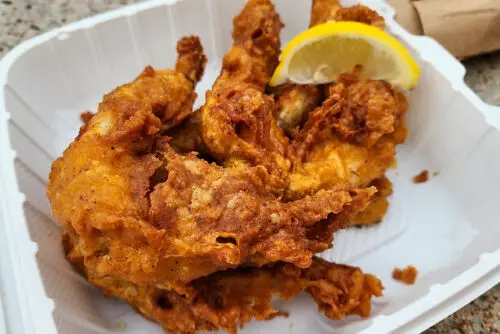
Fried frog legs were a delicacy in certain households, especially in southern and French-inspired cooking. Grandma’s version often came from frogs caught in nearby ponds or streams. Today, catching wild frogs without permits is illegal in many regions due to population decline and ecological concerns. There are also health guidelines about preparing amphibians to avoid contamination.
While farm-raised frog legs remain available, the thrill of catching and cooking them fresh is mostly a thing of the past. Laws protect native species from overharvesting, limiting access to wild-caught versions. The dish hasn’t vanished entirely, but its traditional sourcing has. Grandma’s pondside harvest is now largely off-limits.
22. Smoked Fish Without Approved Processing

Smoking fish at home was once a common way to preserve a catch, especially in fishing families. Grandma’s smokehouse might have turned out salmon, trout, or mackerel with rich, deep flavor. But without approved processing temperatures and times, smoked fish can harbor botulism and other pathogens. Selling or even serving uninspected smoked fish can be illegal in many areas.
Regulations now require commercial smoking operations to follow strict guidelines, including refrigeration and pathogen testing. While home smoking for personal use is often allowed, the risk of unsafe handling is why health codes are so strict. Grandma’s methods may have relied on instinct, but today’s laws rely on thermometers and paperwork. It’s another recipe where tradition and regulation are at odds.
This post 22 Recipes Your Grandma Used That Are Now Practically Illegal to Cook was first published on American Charm.


